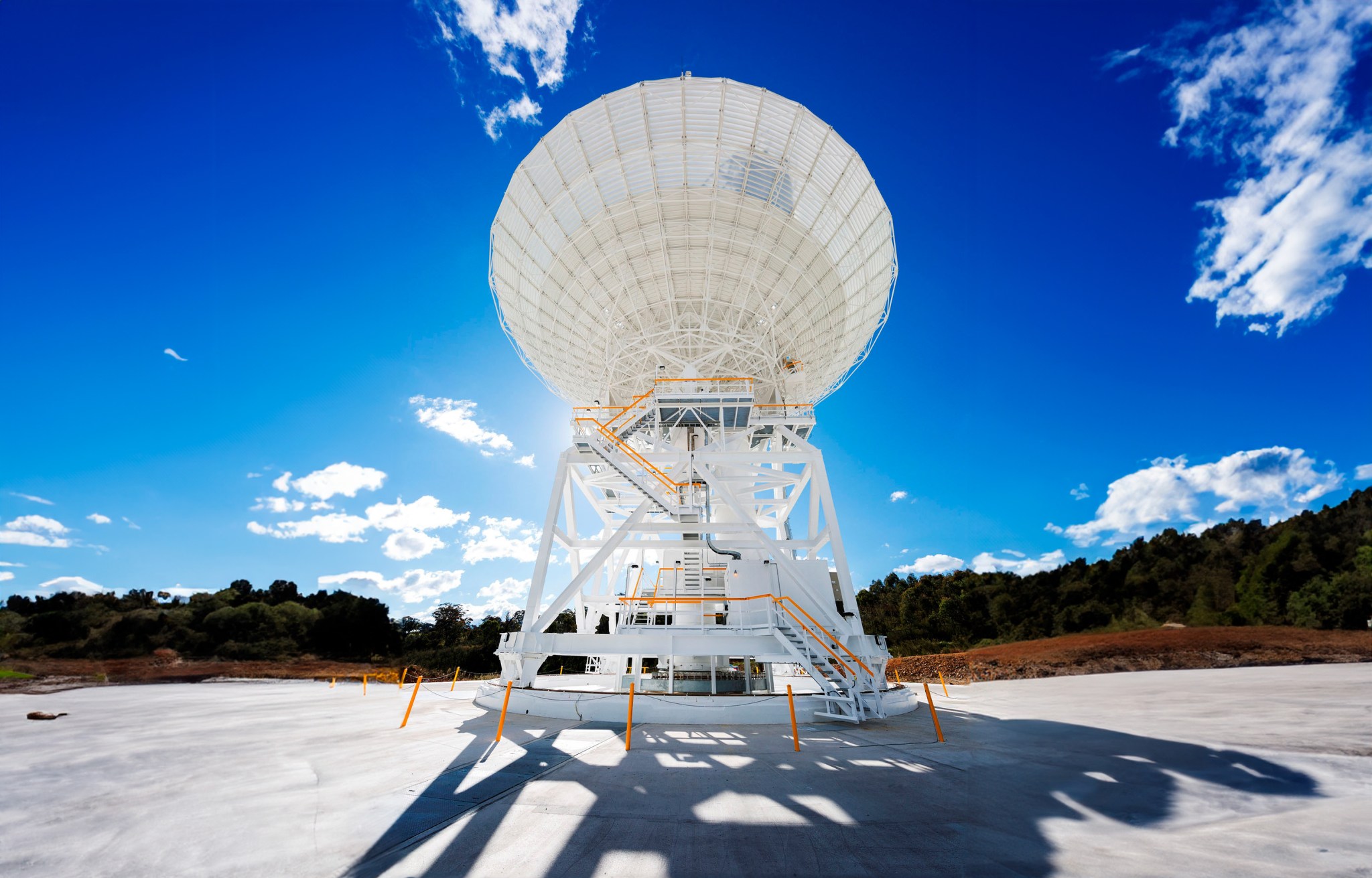
NASA’s newest Deep Space Network antenna, Deep Space Station 35 (DSS-35) in Canberra, Australia is now operational. DSS-35 is the first in a series of 34-meter (111-foot) beam waveguide antennas to be built as part of a project to expand the DSN. The ribbon-cutting ceremony will take place sometime in early 2015.
The beam waveguide antenna is different than its predecessors because the antenna allows for multiple frequencies to be transmitted and received by the turning of the mirror in the pedestal room below the antenna. The antenna is much easier to maintain and signals can be translated on the spot to information that we can understand.
The Deep Space Network (DSN), which turned 50 on December 24, 2013, provides communication and tracking services to about 35 NASA and non-NASA missions beyond geosynchronous orbit. The DSN consists of three ground stations located approximately 120 degrees apart on Earth. This is to ensure that any satellite in deep space is able to communicate with at least one station at all times. The stations are located in Goldstone, California; Madrid, Spain; and Canberra, Australia.
The Commonwealth Scientific and Industrial Research Organisation (CSIRO) performs the day-to-day operations at the Canberra Deep Space Communications Complex. NASA’s Space Communication and Navigation (SCaN) Office has assigned operations and maintenance to the Jet Propulsion Laboratory (JPL).
› Deep Space Network (DSN)
› Canberra Deep Space Communications Complex
› View SCaN Latest News Archive

























